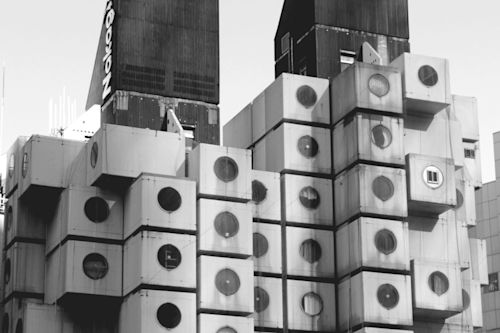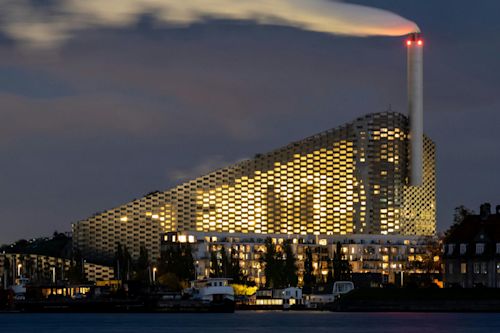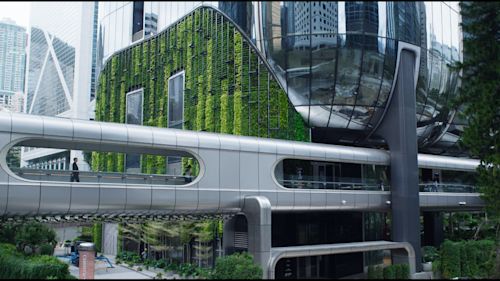In recent years, the world of work has been undergoing a profound transformation, with an increasing focus on employee well-being and the quality of workspaces. Among the most innovative trends shaping office design is the concept of hotelification — a term borrowed from the hospitality industry that is revolutionizing how we conceive the workplace.
But what exactly does hotelification mean, and how can companies benefit from it?
What is "Hotelification"?

Hotelification refers to the integration of hotel-inspired elements and services into the workplace. The concept aims to create spaces that feel like true "work resorts": comfortable, welcoming, and multifunctional environments that go beyond the traditional office setup.
In practice, hotelification brings together design features and amenities typically found in hotels, such as elegant lounges, wellness areas, relaxation spaces, premium coffee bars, and even corporate lounges.
This trend is closely tied to the rise of hybrid work models and the growing need to make offices more appealing to employees, who increasingly seek environments that promote well-being, foster interaction, and boost productivity. The goal is to transform the office into a place where peoplewantto spend their time — not where they feel obliged to be.
According to a report by Gensler, one of the world’s leading architectural firms, offices that embrace hotelification see higher levels of employee satisfaction, improved collaboration, and better talent retention.
Amy Campbell, an architect at Gensler in San Francisco, defines this trend as "the integration of the hospitality experience into the workplace.":
"It's about anticipating people's needs and creating solutions to meet them,"explains Campbell, who sees this approach spreading not only in offices, but also in residences and airports.
The Origins of "Hotelification"

The idea of bringing hospitality elements into the workplace is not entirely new. As early as the 2010s, tech giants like Google and Airbnb began reimagining their offices, designing spaces that felt more like boutique hotels than traditional work environments. However, the COVID-19 pandemic significantly accelerated this trend, pushing many companies to reconsider the role of physical offices.
With the rise of remote work, many offices have become places people use only when necessary. In response, organizations have started investing in spaces that offer genuine added value, transforming the work experience into something closer to that of a luxury hotel.
The Benefits of "Hotelification" in the Workplace

Embracing a hotelification approach offers numerous advantages for both companies and their employees. Here are the key benefits:
Improved well-being and productivity
Comfortable, welcoming spaces designed for both relaxation and focus — with varying levels of privacy — enhance employee well-being. Pleasant, stimulating environments help reduce stress and boost productivity.
Attracting and retaining talent
In an increasingly competitive job market, providing a hotel-inspired work environment can make a significant difference in attracting and retaining top talent. New generations of workers are seeking spaces that prioritize well-being and flexibility.
Promoting collaboration and creativity
Lounge areas, cafés, and multifunctional spaces encourage informal interactions and collaboration among employees, fostering creativity and innovation.
Sustainability and human-centered design
Many hotelification projects incorporate sustainable solutions, such as natural lighting, eco-friendly materials, and advanced energy management systems. The design also focuses on human needs, improving ergonomics and accessibility.
Technology to enhance the employee experience
The blend of hospitality and office culture also includes smart technology, such as seat and room reservation systems, helping to optimize space usage and reduce energy and heating costs. These solutions improve efficiency, foster collaboration, and increase employee satisfaction.
Five International Iconic Examples

Apple Park (Cupertino, USA) – "The Tech Resort" Apple Park is more than just a headquarters — it’s a technological oasis set amidst lush greenery. Designed by Foster + Partners as a high-tech eco-resort, its circular layout draws inspiration from nature. With 9,000 trees surrounding the campus, it evokes the feel of an upscale eco-resort, offering a rejuvenating environment. The gourmet restaurant and carbon fiber roof combine luxury with innovation, while the wellness center, featuring a gym and therapy spaces, promotes employee well-being. Apple Park achieves a perfect balance of nature, design, and technology.
The Edge (Amsterdam, Netherlands) – "The Employee Hotel" The Edge in Amsterdam redefines the office experience by seamlessly integrating technology and comfort. A concierge app personalizes lighting and temperature for each employee, creating a tailored environment. The interior garden, home to rare plants, and the lounge bar cultivate a relaxing atmosphere. Even the showers, with premium amenities, echo the luxury of five-star hotels. It’s a smart workspace where efficiency and well-being go hand in hand.
Airbnb HQ (San Francisco, USA) – "The Office as a Boutique Hotel"Airbnb's San Francisco headquarters fully embraces hotelification, turning the office into a travel-inspired experience. Each area is designed to reflect Airbnb listings, from a New York loft to a tropical villa. Premium amenities, including chef-led kitchens and yoga rooms, elevate the workplace to hotel standards. The internal "Travel Desk" acts as a real concierge service for employees. It’s the perfect blend of work, hospitality, and well-being.
L'Oréal Headquarters (Paris, France) – "The Palace of Beauty" L'Oréal's Paris headquarters embodies the hotelification concept with a design reminiscent of grand luxury hotels. The atrium, featuring a marble staircase and skylights, recalls the opulence of The Ritz Paris, while sumptuous materials like velvet and satin-finished metals add further refinement. The in-house spa offers exclusive treatments with L'Oréal products, mirroring a five-star wellness suite. The gourmet restaurant, "Le 62," curated by renowned chefs, enhances the culinary experience. With beauty lounges, digital concierges, and cultural events, the headquarters transforms the workday into an exclusive, immersive experience.
Salesforce Tower (San Francisco, USA) – Business Hotel Work Salesforce Tower brings hotelification to new heights, transforming its corporate skyscraper into a luxury experience. The Sky Lobby greets employees and visitors with a concierge-style reception and stylish lounges. The Cloud Lounge, complete with a panoramic bar and designer furnishings, recreates the ambiance of an exclusive rooftop venue. Premium services, from gourmet dining to meditation spaces, elevate well-being at work. It’s a seamless fusion of business, hospitality, and lifestyle.
"Hotelification": Rethinking Offices for a New Work Experience

Hotelification offers a compelling answer to the evolving needs of today’s workplaces, placing employee well-being and the quality of spaces at the forefront. Designers and architects now have the chance to reimagine office environments in innovative ways, weaving in elements from the hospitality world to create welcoming, flexible, and sustainable spaces. In an era of increasingly hybrid work models, the office must go beyond mere productivity — it should become a destination where people genuinely want to be.



